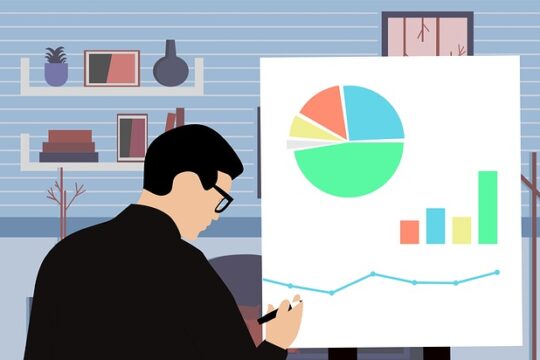
Due to the high regulatory requirements in life sciences, computer systems that impact product quality and patient safety must be validated. Properly performing a validation requires time and effort but prevents costly implementation delays, rework, team integration issues, and post-deployment defects.
Using state-of-the-art software validation applications can help life science companies reduce manual processes, cut cycle times, and gain visibility, efficiencies, accountability, and data integrity.
Table of Contents
Reduced Risk of Data Integrity Issues
Every process must be tightly managed when developing drugs or medical devices to ensure that all regulatory submissions are accurate and complete. That’s why FDA regulations – including 21 CFR Part 11 – require life science companies to validate the computer systems that manage those processes.
Life sciences validations are resource intensive, requiring substantial time and effort to develop and execute the necessary tests. However, these testing procedures are critical to ensure that data and records are captured, stored, and maintained with accuracy, integrity, and reliability.
Despite the benefits of digital transformation, a lack of time and resources often translates into life sciences companies using outdated systems or software. This “tech debt” can create a chain reaction that impacts all business areas, from product development to data analysis. Inadequate technical processes and a lack of corporate data hygiene often result in many issues, ranging from inaccurate decision-making to costly penalties.
The best solution to this problem is life sciences validation software, which automates validation and reduces the need for manual testing by up to 75%. An automated validation process helps speed up the project timeline and lowers in-house validation costs. It also supports continuous validation, demonstrating that an app is not just valid at a specific time but remains compliant as new patches and upgrades are applied.
Increased Efficiency
Digital validation allows life sciences leadership to shift the resources of SMEs and staff away from labor-intensive manual validation processes, putting these critical assets to more productive use. In an industry where there’s a continual talent shortage, this is of crucial importance.
Similarly, using an automated Continuous Validation (CV) solution instead of a traditional point-in-time CV reduces risk and saves time. A leading pharma company that switched to CV for its FDA software validation process could reclaim 4,000 hours a year (nearly two full-time equivalents) from the old manual process.
However, implementing an automated CV solution isn’t as simple as merely switching from manual to digital validation. The key is choosing the right solution. Selecting a vendor with life sciences expertise and the ability to deliver validated applications is critical. In addition to providing a robust CV capability, the best vendors also offer a range of other life sciences solutions, such as innovative control solutions for manufacturing excellence, supply chain visibility, operational and strategic decision-making, and more.
A good gauge to see whether a potential CV solution is suited to life sciences is to ask if they have validated their platform against 21 CFR-Part 11. It ensures that MES and LIMS systems can interface without violating GxP guidelines, avoiding needing a separate LIMS license on the factory floor and enabling a more cost-effective MES solution.
Enhanced Compliance
Life science companies must ensure that their computer systems are validated according to GxP (Good Manufacturing Practice) quality guidelines and regulations, such as FDA 21 CFR Part 11. The goal is to demonstrate that the system provides a high assurance that data submitted in regulatory filings are accurate and adequately recorded.
This validation process is often complicated and expensive, resulting in lost productivity for life sciences teams. Having the ability to automate validation tasks and reduce the number of manual processes will help improve your organization’s compliance with FDA requirements.
The good news is that software vendors who truly understand these challenges are working toward lower effort and more FDA-accepted validations for their life sciences products. For example, some life sciences quality management solutions offer a unique validation methodology significantly reducing validation time.
These digital transformation solutions enable life sciences organizations to implement best practices, enforce standardization, and ensure data integrity while eliminating the costs, errors, and inefficiencies associated with antiquated paper-based processes. With these solutions in place, your organization will be well-positioned to meet the challenges of Pharma 4.0 and successfully release life-saving medicines to needy patients.
Increased Productivity
The paper-based processes of managing validation in a life science company significantly burden companies with strict regulatory and quality compliance requirements. This inefficient process creates a bottleneck that hinders productivity and delays life-saving products for patients.
All software systems that impact product or patient safety and data integrity must be validated under GxP guidelines for pharmaceutical, biotech, and medical device companies. It is known as Computer System Validation (CSV). Failure to perform CSV correctly can lead to costly implementations, rework, team integration issues, and post-deployment defects.
A business can save time and money by implementing a state-of-the-art, lean, paperless validation application that manages the entire validation lifecycle while improving productivity, visibility, and accountability. In addition to eliminating inefficient paper processes, a life sciences organization implementing such an application can reduce documentation cycle times, eliminate inconsistencies and gain visibility into critical metrics.
Life science companies must shift their mindset to incorporate agile methodologies and continuous validation into their regulated digital systems. However, this is easier said than done for many organizations entrenched in waterfall practices. One way to get started is by focusing on a few high-leverage process points that can be quickly and easily converted to an agile model. Then, build a pilot program to generate data and demonstrate that the elegant model works.



